Recently, I have found some unexpected pleasure in daylighting some of the family photographs that my parents left — those that, despite their candid and informal nature, could now be said to have gained historical value, simply through the passage of time.
Many things have been called “the great equalizer” — running the gamut from education, to pandemics, and even, oddly, to handguns. But in the case of anything with a long shelf life, the great equalizer is time and inattention. Black and white negatives on Kodak safety film are often found to be more shelf-stable than the boxes they are stored in; and when their photographer never gets around to printing them, their miniature, reversed images are doomed to inattention from all but perhaps the most curious people. But when they emerge from a slumber of seventy years, every scene they depict, no matter how insignificant at the time it was taken, is as capable as any of its cohorts at holding historical value.
Previously, we examined a set of images from Cunningham’s Drug Store in 1952. Today, we will pore over a few previously unseen photos from the American Airlines freight agents’ office at Willow Run Airport, taken in the early 1950s.
Willow Run in the 1950s
Many people whose family history includes southeast Michigan have a connection to Willow Run. In the second world war, the bomber plant here manufactured B-24 Liberators, and is said to have employed the original Rosie the Riveter. Although the identity of that individual and whether she worked here or not is in dispute, the plant did employ thousands more like her — including my grandmother.
After the war, the airport and its factories reverted to civilian use. Among many others, American Airlines operated its air freight terminal at Willow Run, and employed my father for a time as a freight agent. As a child I always knew that he had worked at “the airlines,” but I had very little understanding of what he did or what the workplace was like. While these photos obviously fill much of that gap for me personally, I’d wager that these images will interest others as well.
These scenes were gathered from several rolls of film, taken at different times, spanning a period of perhaps several years between about 1953 and 1956. I did not attempt to reconstruct their sequence because there was no way to tell the order in which the rolls were taken. Instead, I’ve grouped them by similarity of subject.
Indispensible
It could be said that, in terms of fundamental importance, or at least professional dignity, air freight agents are a notch above passenger agents. Instead of petulant tourists and their suitcases of souvenirs and dirty underwear, freight agents conduct the vital moving parts of industry and commerce.
When a freight agent urgently answers the phone and pores through a freight manifest, it isn’t because somebody has had a notion to change their flight and wants their bags pulled off. But it might be because General Electric wants the turbine routed to Utica instead of Schenectady, so the power plant can stay online.
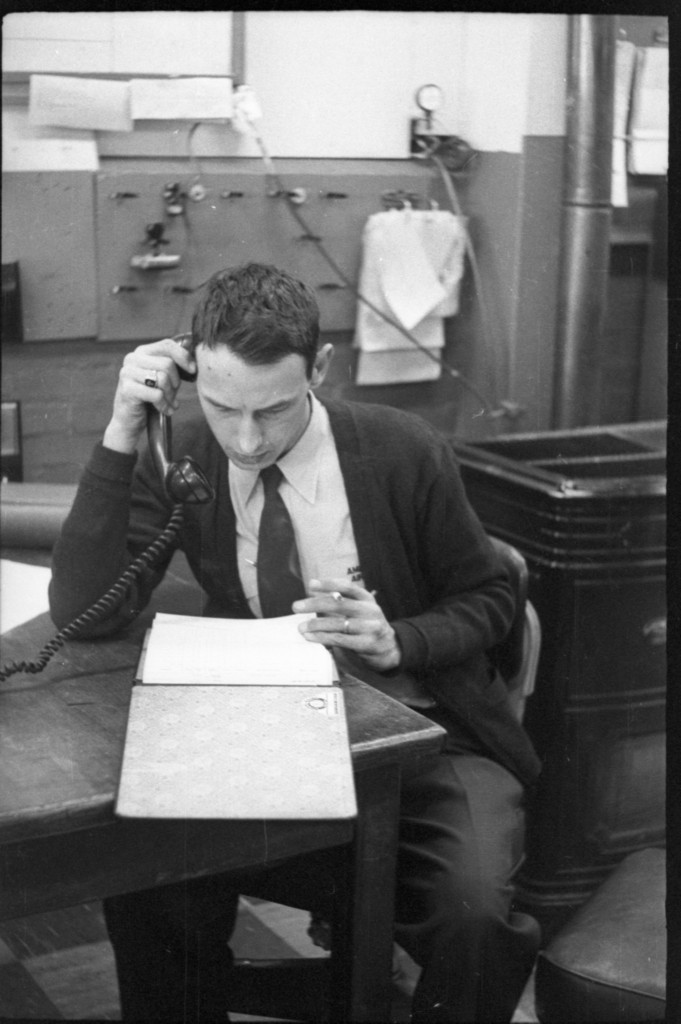
Bills of lading and freight receipts called for a lot of typing. Although I am told that my father always wore a suit and tie to work, apparently the dress code was not so strict for everyone. Judging from other photos, the freight office may have been a glassed-in area in a corner of a large hangar, and did not look very well ventilated. This could have just been a warm day in the hangar.
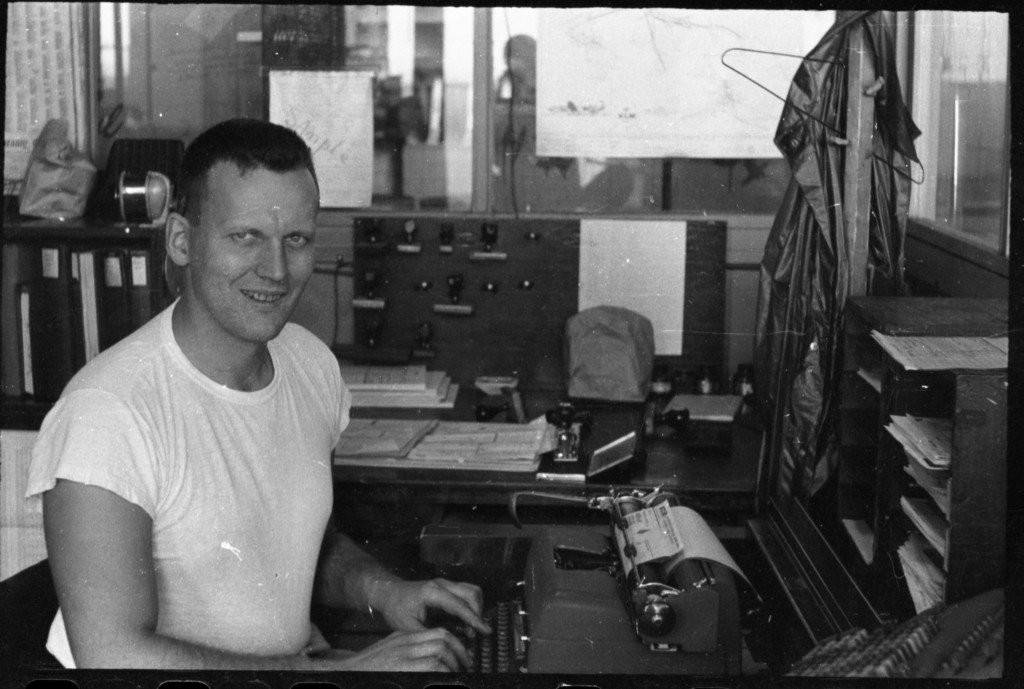
It’s hard to tell what kind of task the woman below is performing, but she seems to be interacting with an early form of spreadsheet. I can imagine that keeping track of timetables and shipping schedules between multiple points of arrival and departure by multiple flights must have been a tricky affair. It probably inspired the creation of some very complicated forms.
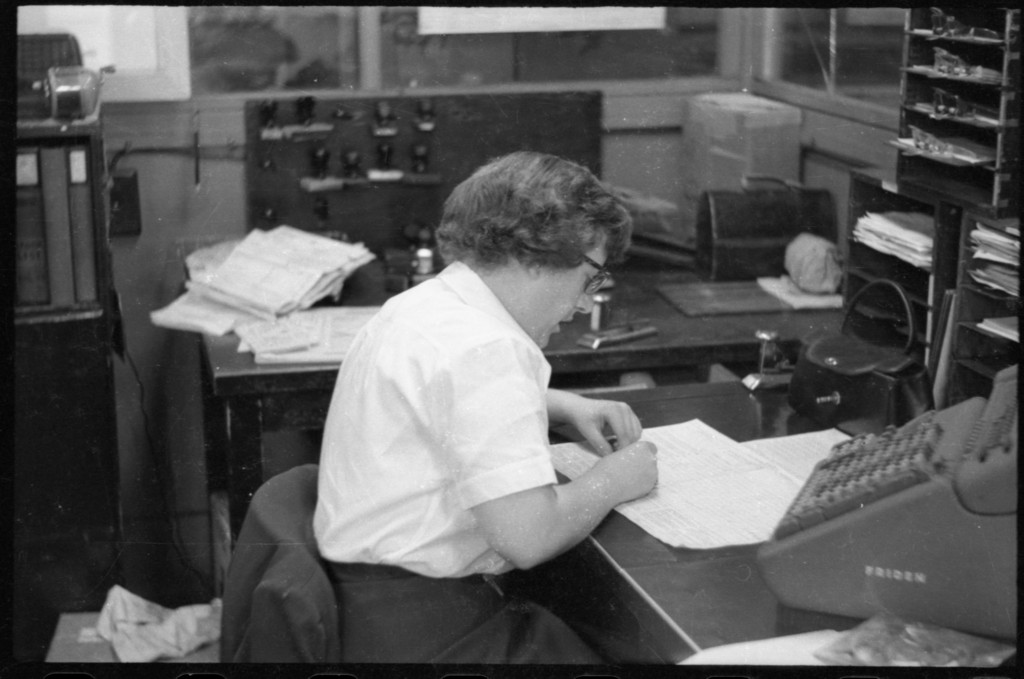
This kid has Jimmy Olsen written all over him. He looks excited to be working in a freight agent’s office. In the background, I like to imagine that it is a freight pilot who has his back to us, as he checks-in his cargo. The agent holds the obligatory clipboard, smiling as he banters with the pilot. Several others seem actively engaged in activity, either typing up forms or attending to something in real time. This looks like a night scene, as the view out the windows seems quite dark in contrast to the flash. It shows that freight activity was an around-the-clock affair.
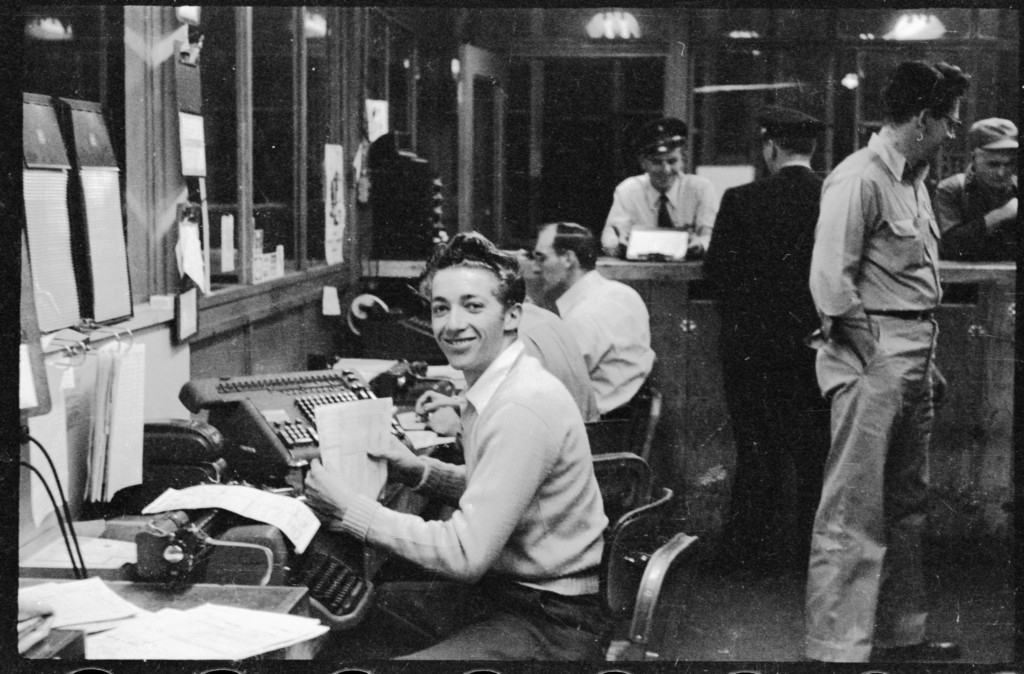
Below we see something of the layout of the freight terminal. Apparently, my father intended to capture this scene for a similar purpose, as he would have had to climb up on a mezzanine at the rear in order to take the shot. It captures a good impression of the scope of the activity we will see in later frames. Particularly striking is the empty expanse of tarmac, baking in the sun as it stretches off to the horizon, awaiting the next plane. It seems to embody a sense of distant destinations and untapped possibilities, one that must have appealed to many who chose to work in the airline industry.
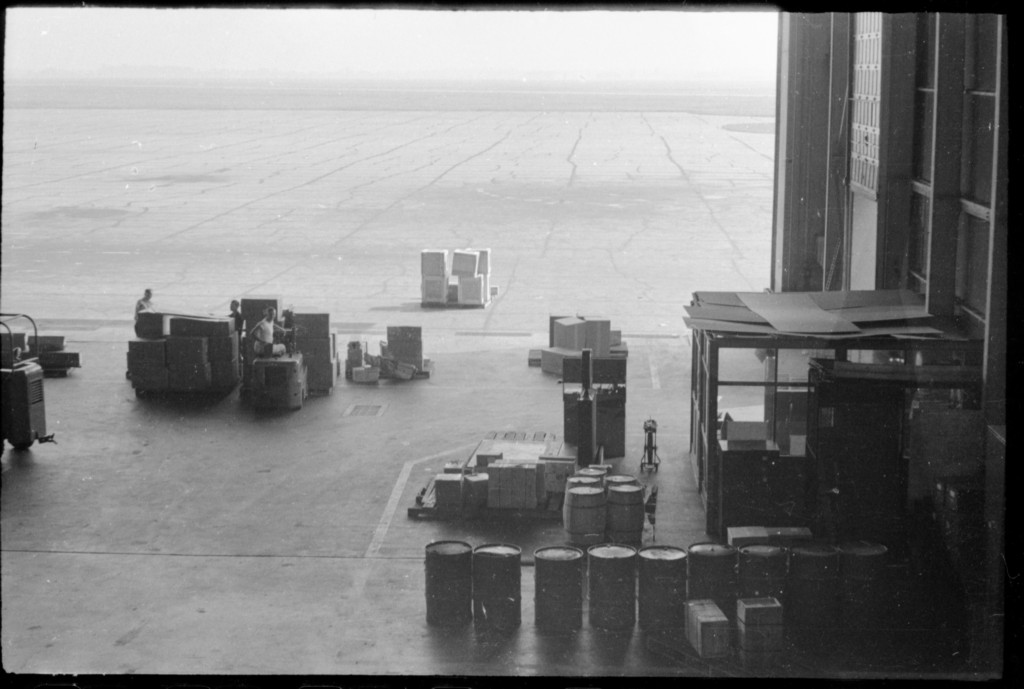
Times change, but not so much pallets and forklifts. These parcels are either going on, or coming off, a plane that likely awaits on the tarmac. In the distance we see a glimpse of a parked plane, likely belonging to a rival airline, receiving the same treatment.
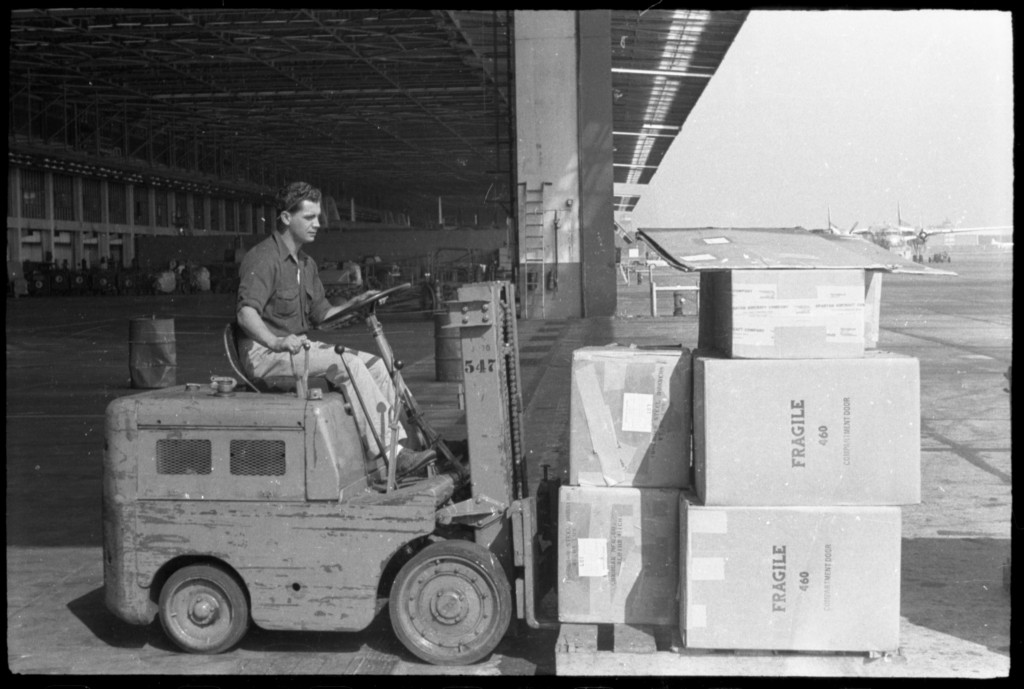
Loading a plane in these pre-containerized days must have been like playing a game of three-dimensional Tetris, with every shape and size of crate imaginable, all with different degrees of fragility and required orientation.
Lift with the knees, gents, the knees!
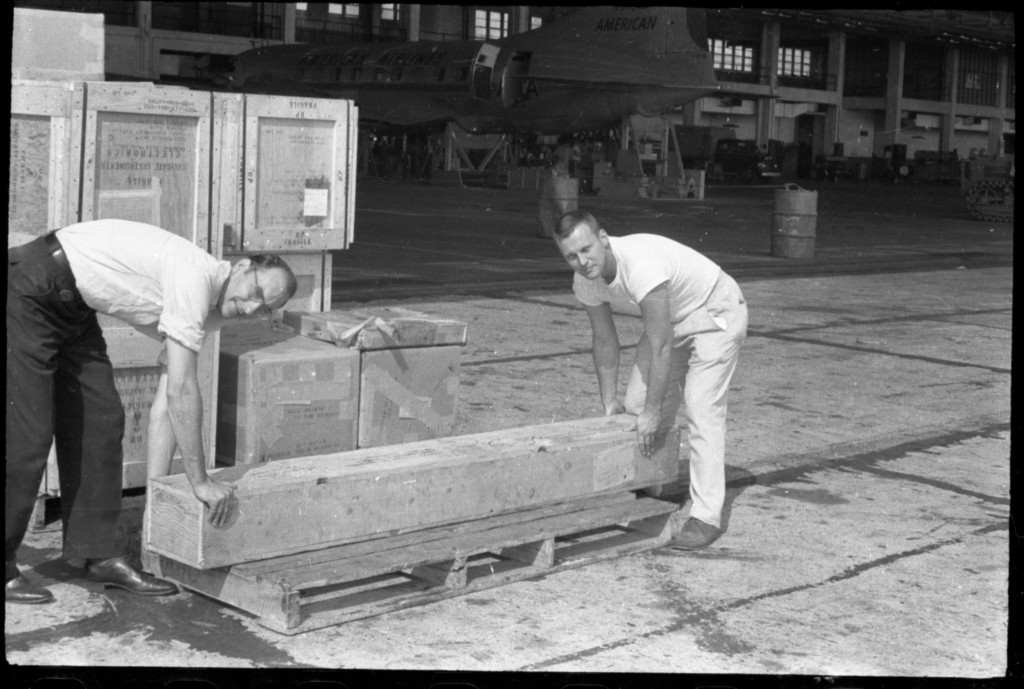
Speaking of orientation, below we see an agent posing against a crate whose lettering indicates that it contains delicate electronic instruments en route to General Electric in New York. Concerningly, the lettering on the crate is upside-down. In fact, if we go back and closely examine the photo above, we can see that the lower crate is indeed inverted (“up” arrow is pointing down), and another is on its side (the side panel that faces us is marked “up” at all four edges). Oh well, it’ll probably be fine.
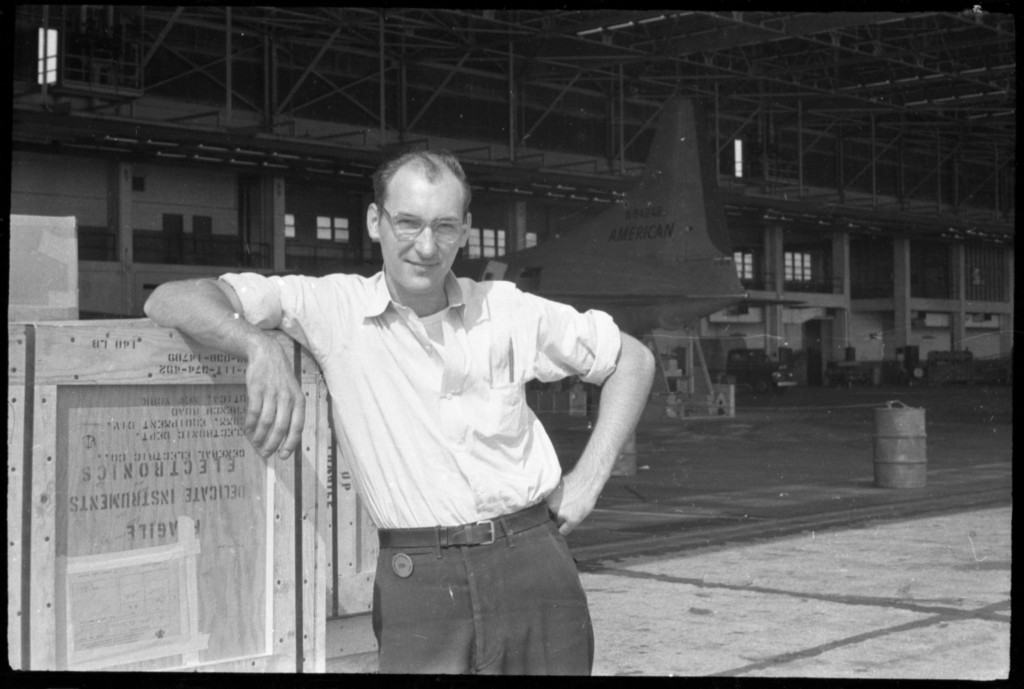
Both of the photos above also reveal a bit of aircraft history in the background. Behind the men is a plane in drydock, an American Airlines Convair, bearing tail number N94242. According to another source, this same plane belly-landed at Chicago’s Midway Airport in a snowstorm in December of 1954. Could this be where it went for repairs? But it doesn’t seem possible, because later photos on the same roll show that these pictures must have been taken in the warm months of 1953 or possibly 1954. Either the mishap was still in its future, or the date of the report is incorrect.
Below we can see more of the rear mezzanine, from where the earlier photo of the interior of the terminal out to the tarmac must have been taken. There doesn’t seem to be much going on up there. At this moment the activity is clearly centered around the forklifts, tugs, and their operators — as they dutifully pose for posterity.
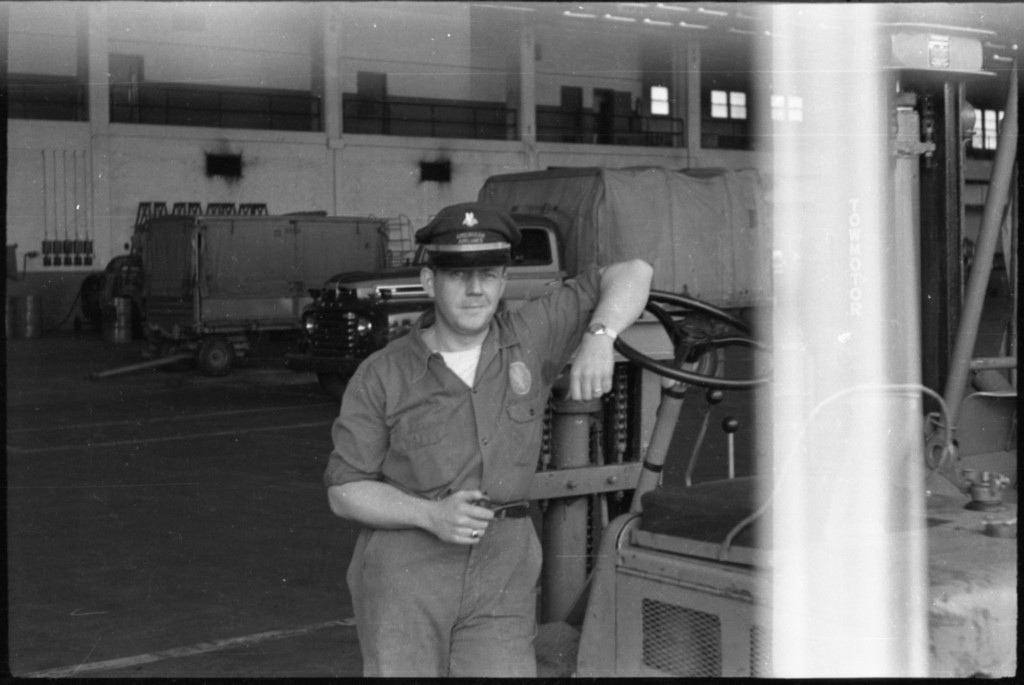
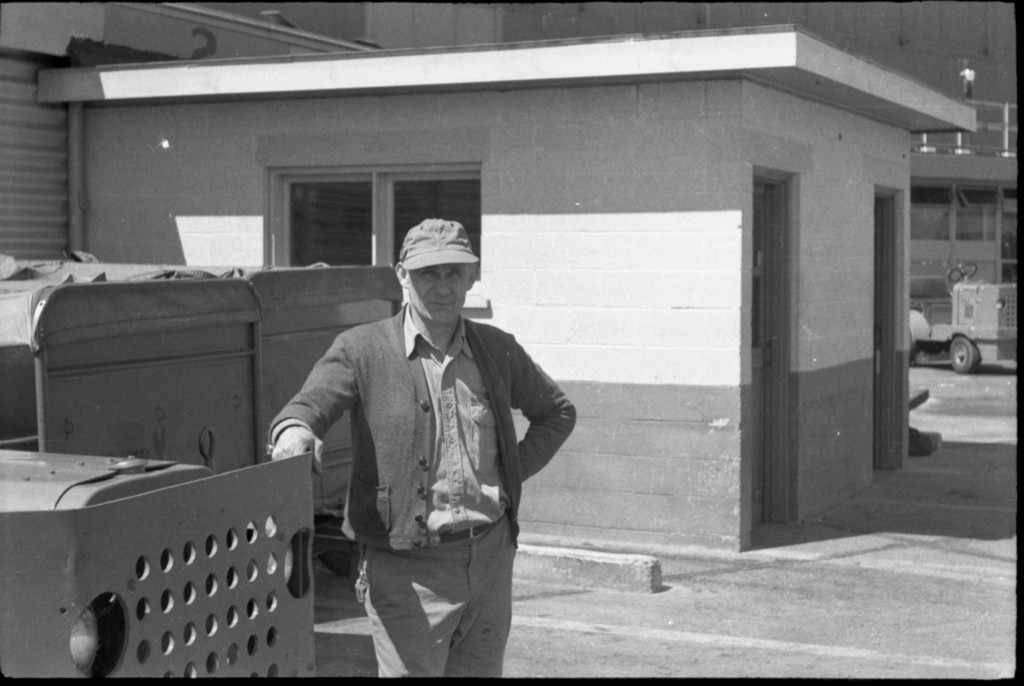
All of this activity is, in turn, centered around the comings and goings of a cargo plane. Here we see a later photo, probably from about 1956, showing an example of where the cargo would have been going to and coming from. The height of the cargo floor is such that only a high-rise forklift could perform the job. No conveyor belts for these folks. Many of the items were just too big.
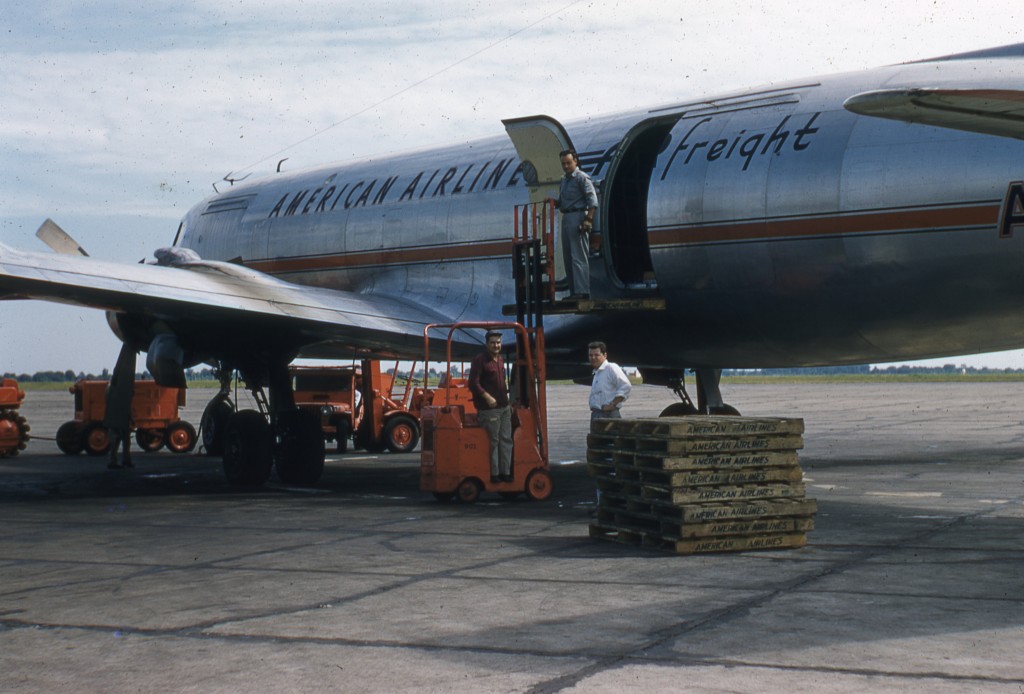
It must have involved a whole different set of operations and operators to load and unload a plane, dealing as they must with the proximity to the aircraft. These experienced operators, also pictured above, are taking a moment to pose for the camera.
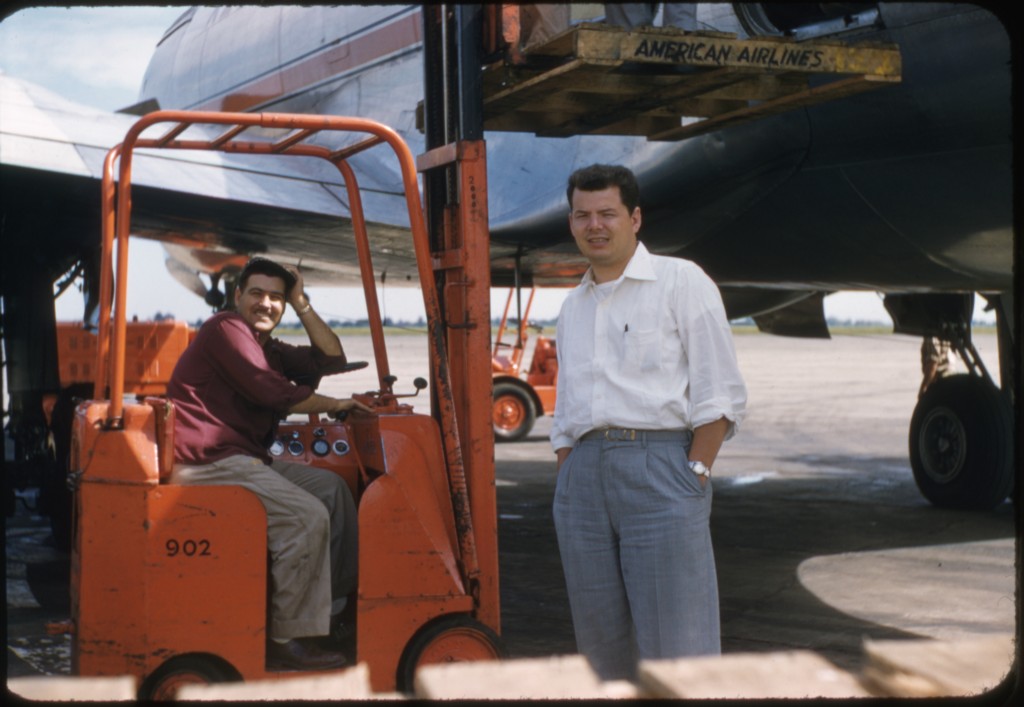
But not every movement in this symphony was focused on an aircraft. Below we see a Railway Express Agency delivery truck, sporting a Camel Cigarettes sign on the side. It has 1953 license plates, so it helps pin down the date. But I’m not so sure it’s carrying cigarettes. What we can see of the inside seems to consist of flat crates with large holes punched in the sides. Live animals, perhaps? We don’t know if they’re coming or going, but it makes a lot more sense to send live animals by air freight, than cigarettes.
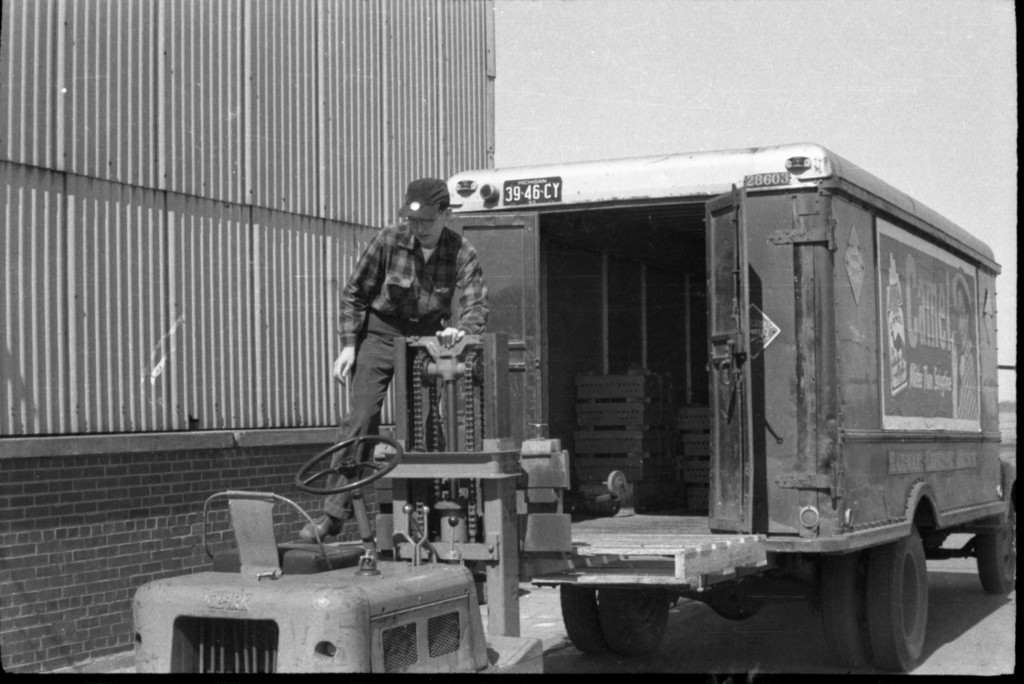
The romance of the skies
I can imagine why my father found this relatively rote job to be intriguing, for the time that he held it. Freight pilots from distant cities, who probably saw action over Europe or Japan in the war, must have dropped in daily, now shooting the breeze instead of the enemy, as their cargo was transferred. This was a place of urgent activity and razor-sharp intent, punctuated between planes by periods of gregarious quiet. Each plane landed and disgorged not only its cargo but also its crew, who might have spent an unscripted hour or two among typists, clerks, agents, forklift operators, and aircraft technicians — the classes mixing thoroughly up and down the ladder, united at the hip by the business at hand. And why not? With the war in the relatively recent past, many of them had probably served a tour of duty at some point, or served the war effort in other ways, and had that in common at least.
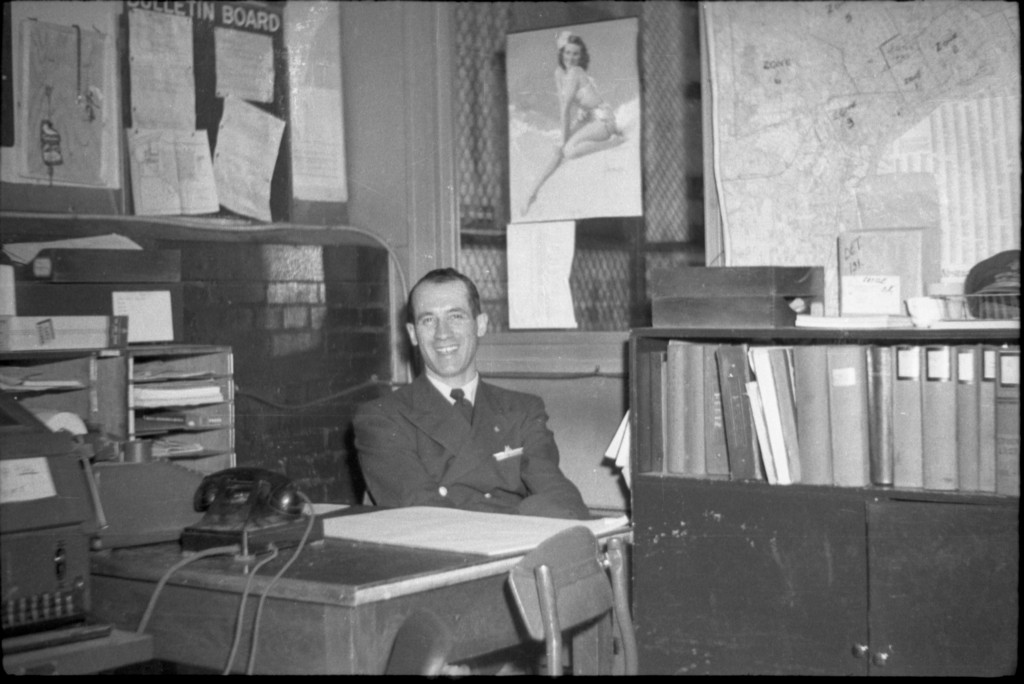
I had originally assumed that the seated man in the photos above and below is a pilot — because his badge seems to suggest wings. But it turns out that many American Airlines uniform tags of the time had this appearance. On the original negative of the photo below, I can barely make out that the badge of the man who is standing up seems to read “LEAD AGENT”. So perhaps these are not pilots but just agents, who seem to be showing my father something humorous in the ledger book, under the watchful eye of Miss January.
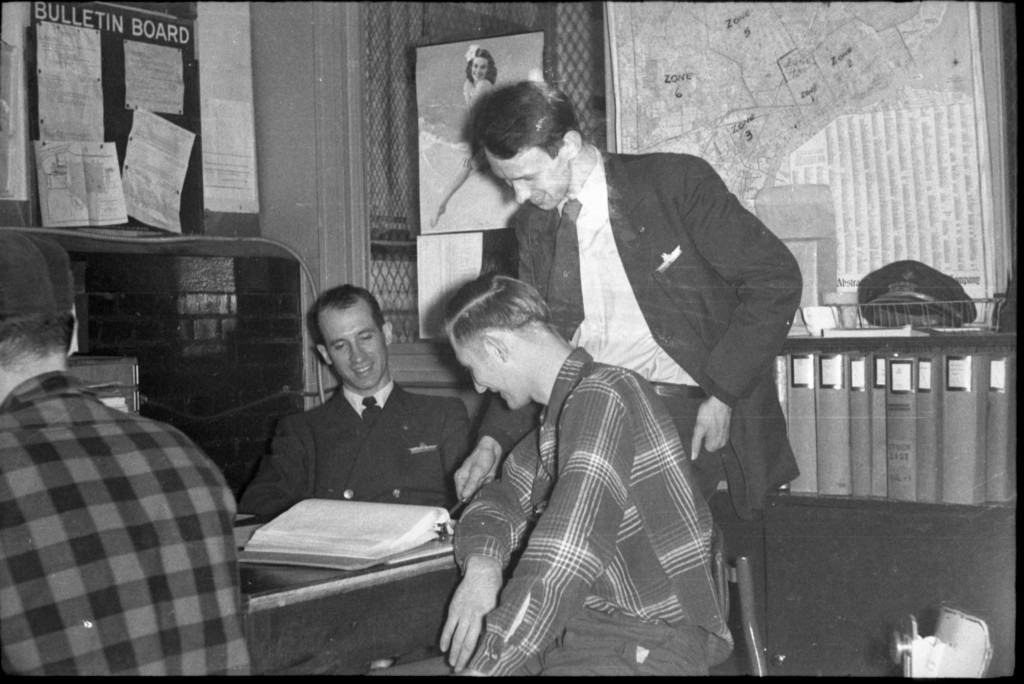
Indeed, the freight office appears to have been a bit of a male domain, and predominantly white at that, as many industrial settings were at the time. From the wall decor and casual clothing, some of these shots could as easily have been taken in a military field hut. The similarity is not coincidental. Logistics and heavy lifting were at the core of both.
And also like life in the military, not all hours at the terminal were buzzing with urgent activity, as the frames capture a number of idle moments.
Judging from the hat insignia, the person below is probably another freight agent, in uniform, relaxing between shipments.
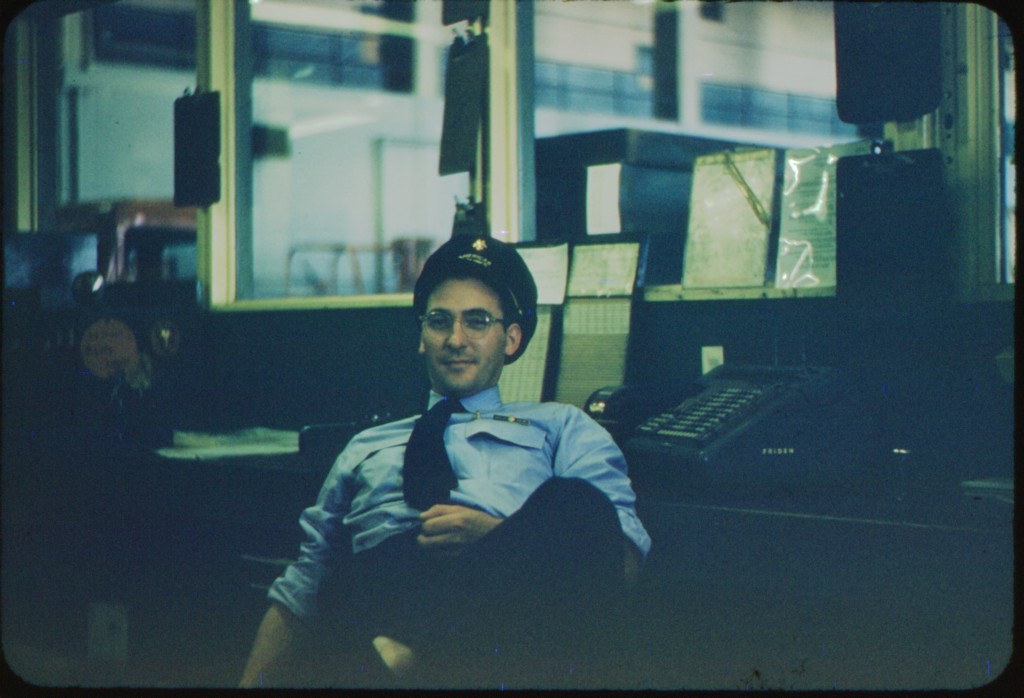
Another staff member, probably an operator or technician, rests with a cigar among the homey clutter of a well-broken-in office.
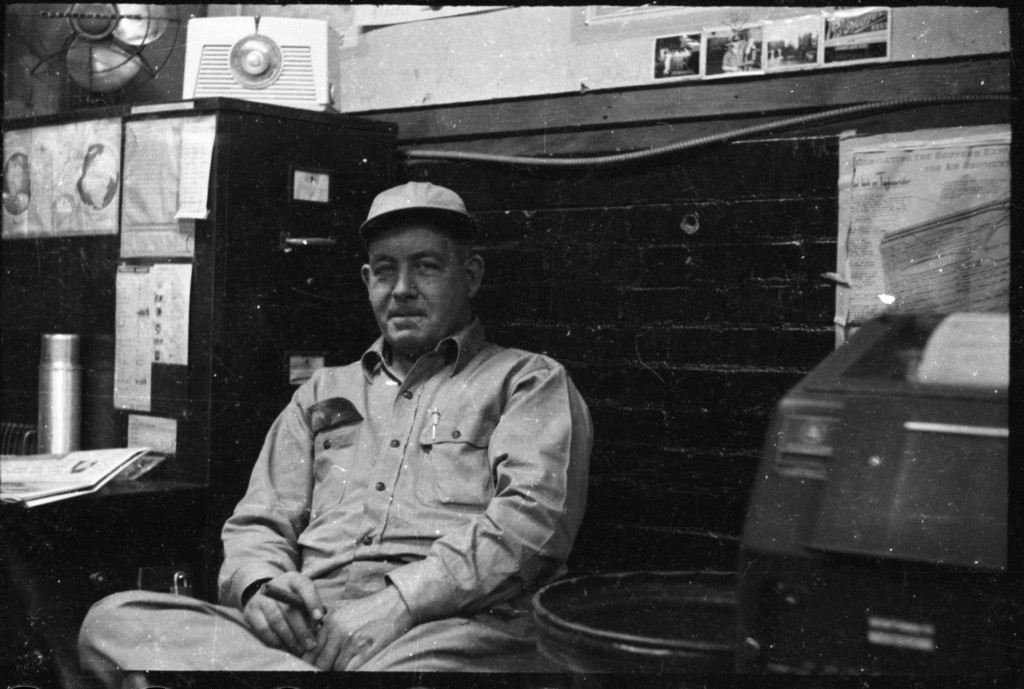
The scene below is more intense, as two of the staff engage each other in a deeply competitive chess match.
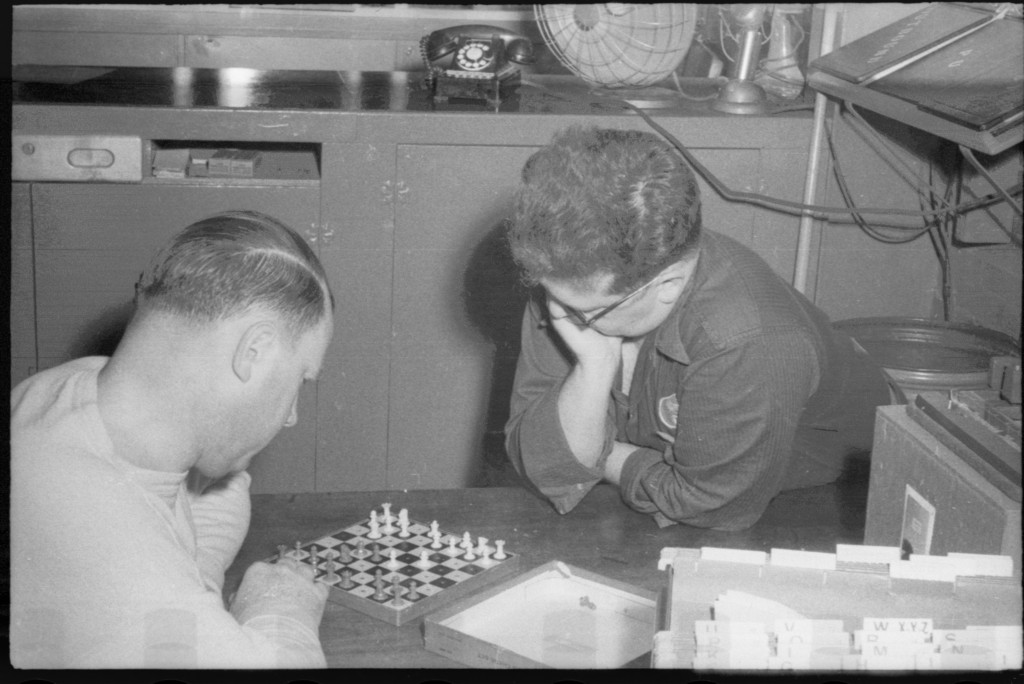
The chess desk must have been a popular spot for relaxation; here a worker enjoys the breeze of an electric fan as he catches up on some light reading between shipments — phone and flight schedules close at hand.
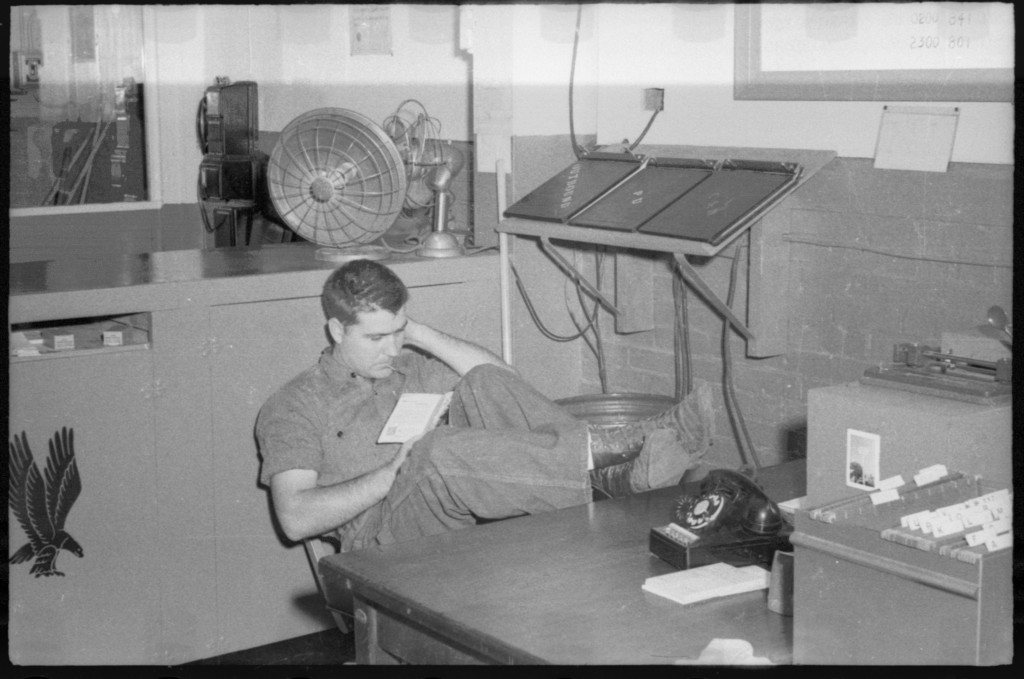
Photographed, but not forgotten
Through these photos, taken sporadically over the course of several years, I think my father was just trying to capture a typical day at the airlines — because, behind its facade of forklifts, forms, and freightbills, he saw the beauty and magic in this busy air terminal and its daily interactions with far-flung crews and ports of call. And he knew that one day, it would recede far into his past.
Yet there is no evidence that he ever printed a single one of these negatives as a positive image. Rather than a sign of neglect, to me this means that he not only had the foresight to record these images, but also, after failing to find a strong motivation to print them, he preserved them for the rest of his life, just the same. Thus it is a measure of his life that although not a rich man, he was rich enough in his foresight and sense of stewardship that he could afford to leave them alone — assigning them a safe spot of indefinite repose, despite their lack of immediate utility. Perhaps it is also a contrary measure of my own life that, unlike him, I seem to possess enough idle time to resurrect these possibly meaningless images, in a way that he never felt a need to.
Time, in fact, is not only a great equalizer, but also a compressible fluid that readily conforms to the shape and circumstances of its container. My father did not choose to allocate his personal time to printing these photos, perhaps because the passage of time had nonetheless left the scenes perfectly fresh in his mind.
But seventy years later, for my own closely-guarded personal time, there could have been no better use.
Article and photos Copyright 2022 by the author.


One Comment
Gina Joslin
Thank you for this elegant essay on what people take note of and the eventualities of life. It moved me… Superb.